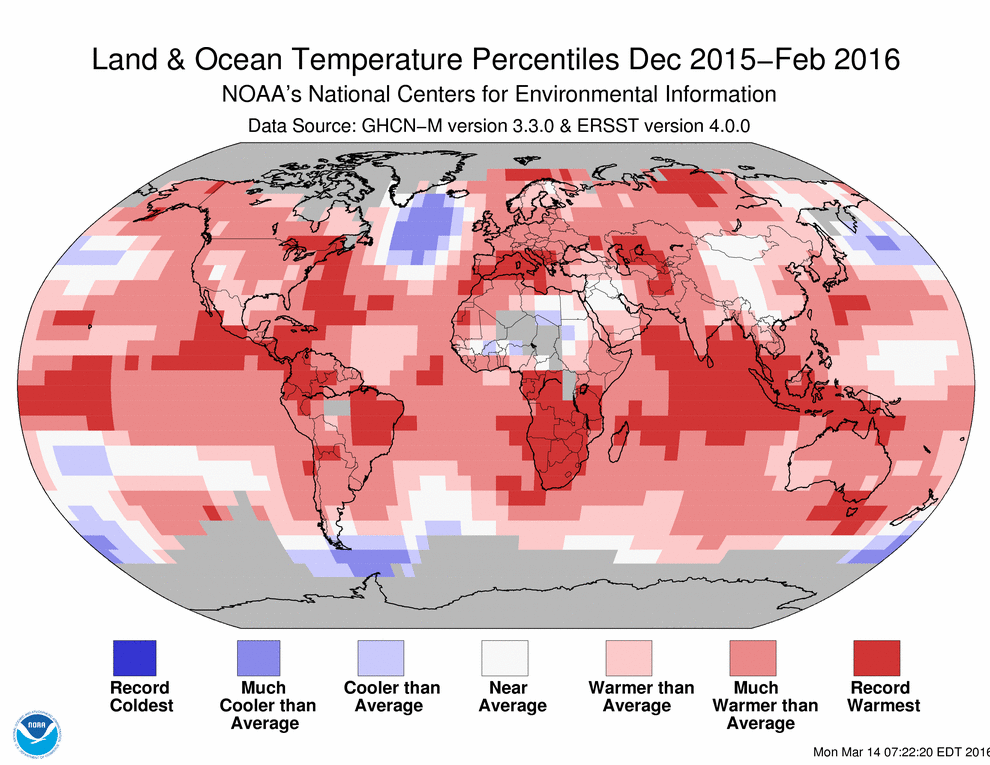James Hansen has published hundreds of scientific papers in his long and distinguished career as “the father of climate change awareness,” as described in The Guardian. With a team he published another one this morning, but this one is different.
For one, although Hansen organized the effort, he is one of a team of 18 experts from around the world, signaling a global consensus around a central scientific idea.
For another, Hansen gave up his tenured post in a government-backed research post in order to lead the effort to reduce greenhouse gas emissions, and to be able to stand outside the government critically.
The idea is that the little-controlled experiment that humanity is conducting on its home planet resembles a period of 120,000 years ago called the Eemian, which was much much warmer than it is today.
The Washington Post reported:
The research invokes collapsing ice sheets, violent megastorms and even the hurling of boulders by giant waves in its quest to suggest that even 2 degrees Celsius of global warming above pre-industrial levels would be far too much. Hansen has called it the most important work he has ever done.
The sweeping paper, 52 pages in length and with 19 authors, draws on evidence from ancient climate change or “paleo-climatology,” as well as climate experiments using computer models and some modern observations. Calling it a “paper” really isn’t quite right — it’s actually a synthesis of a wide range of old, and new, evidence.
“I think almost everybody who’s really familiar with both paleo and modern is now very concerned that we are approaching, if we have not passed, the points at which we have locked in really big changes for young people and future generations,” Hansen said in an interview.
As reporter Chris Mooney noted, to call the warning a “paper” is not quite right. It’s scientific, but it’s also an argument. Hansen argues as he has since at least 1988 in a famous warning delivered to Congress that our present almost uncontrolled release of greenhouse gases is “highly dangerous” to civilization as we know it.
Hansen and team write in an open source European journal called Atmospheric Chemistry and Physics:
If the ocean continues to accumulate heat and increase melting of marine-terminating ice shelves of Antarctica and Greenland, a point will be reached at which it is impossible to avoid large scale ice sheet disintegration with sea level rise of at least several meters. The economic and social cost of losing functionality of all coastal cities is practically incalculable. We suggest that a strategic approach relying on adaptation to such consequences is unacceptable to most of humanity, so it is important to understand this threat as soon as possible.
The paper by Dr. Hansen and 18 co-authors dwells on the last time the Earth warmed naturally, about 120,000 years ago, when the temperature reached a level estimated to have been only slightly higher than today. Much of the polar ice disintegrated then, and scientists have established that the sea level rose 20 to 30 feet.
Indeed, shortly before the new paper’s publication, the National Oceanic and Atmospheric Administration released new recent data on the globe’s temperature that certainly bears a resemblance to what Hansen is talking about. For not only was the globe at a record warmth overall over the last three months, but it also showed anomalous cool patches in regions that Hansen suspects are being caused by ice melt – below Greenland, and also off the tip of the Antarctic peninsula.

(National Oceanic and Atmospheric Administration.)
“My interpretation is that this is the beginning,” Hansen says of these cool patches in curious parts of the global ocean. “And it’s one or two decades sooner than in our model.”
Hansen has been sounding the alarm in public since l988 — but he’s been right more often than not. That’s the problem. What if the climate is changing much faster than our ability to bring down greenhouse gas emissions?
After all, it’s been 66,000,000 million years since the earth saw greenhouse gases released as rapidly as they are now — ten times faster than at any point in the planet’s history — according to the World Meteorological Organization.
.